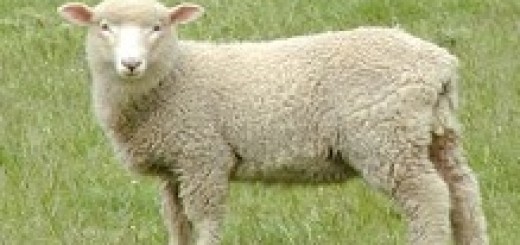By Rabbi David Sterne
It’s parshat Bechukotai (“In my statutes”) and with it, another book of the five books of Moses comes to an end this week. Of course, there are topics of the parsha (the weekly Torah portion), to consider, but what interests us this week are two commentaries from our sixteenth century sage, the Megaleh Amukot (R’ Nosson Nata Shapira) on the Torah. Both of them have to do with the exodus of the Jews from Egypt, during which the Torah records (Ex 13:18) that the Jews exited Egypt “armed” (chamushim) as they fled. An alternative interpretation is offered by Rashi as his second explanation – that the Jews left after being divided into five (chamesh is “five” in Hebrew). That is, only twenty percent (one fifth) of the Jews exited Egypt, and eighty percent of them died in the plague of darkness because they really did not want to leave Egypt. The word chamushim has a number of other interpretations, once of which is “fifty” (chamishim in Hebrew)– that is, the Jews went out of Egypt armed with “fifty,” since the word chamushim is nearly identical to the word chamishim, meaning “fifty.” Playing off this concept, R’ Shapira (author of Megaleh Amukot) suggests two interpretations. One is that the word chamushim alludes to the fifty days between Pesach and Shavuot, during which we count the fifty days of the omer. We actually count only forty-nine days, and the fiftieth day (Shavuot) arrives spontaneously. Nevertheless, R’ Shapira suggests that the verse in the Torah (Ex 13:18) alludes to the fifty days from Pesach to Shavuot, or from the exodus until the giving of the Torah.
The second explanation that Rabbi Shapira offers occurs in our parsha (Bechukotai). When the Jews left Egypt, they took out the bodies not only of Joseph, but of all twelve tribes together with them. And, when you add up the letters of the names of all the tribes (Binyamin spelt with a yud), we find that there were fifty letters. So, in this case, R’ Shapira suggests, the adjective chamushim applies to the twelve tribes, who all came out of Eygpt together. Thus, the Jews left Egypt chamushim…
On another topic, a couple of weeks ago we discussed the 24,000 students of Rebbe Akiva who were transmigrated souls from the 24,000 who were slaughtered by Shimon in Shechem, and who later died in the plague at Shittim…from today’s commentary on Bechukotai, we may glean some insight into the number twenty-four, which frequently seems to be present when there is a manifestation of din, or judgment. The Megaleh Amukot quotes from Amos, Ch 7, verses 7-8, “Thus did He show me: Behold, the Lord standing on a plumbed wall with a plumb line in His hand. And the Lord said to me, ‘What do you see, Amos?’ I said, ‘A plumb line.’ The Lord then said, ‘Behold I am placing a plumb line in the midst of my nation Israel: I will no longer continue to forbear them” (Artscroll translation). The “plumb line” mentioned in these verses seems to be an anchor that indicates a halt or stop to God’s patience with the Jewish people. The word in Hebrew is anach (aleph-nun-kof), with gematria 71, or with the collel, 72, or three times twenty-four. The word is mentioned four times in the two verses, and R’ Shapira suggests that the first three times correspond to the three cardinal sins; idol worship, sexual immorality, and murder. And regarding the fourth mention of anach, the verse says, “I will no longer continue to forbear them.” That is, there is a fourth transgression that the Jews were guilty of in the days of Amos, beyond the three cardinal sins, that God was no longer willing to tolerate. This was the sin of theft from poor people that occurs when the Jews fail to observe the Sabbatical year. Because the poor who glean from the fields during the Sabbatical year have nowhere to glean, the failure to observe the Sabbatical year results in theft from the poor. About this situation, the Midrash says that the zechut Avot – the “merit of the forefathers,” Abraham, Isaac and Jacob – is enough to obtain forgiveness for the three cardinal sins, but not for the fourth sin of theft. That is what the verses in Amos allude to – the three times the “plumb line” is mentioned in the verses refer to the three cardinal sins, but the fourth, about which God says that He is not willing to tolerate, alludes to theft from the poor.
R’ Shapira then goes on to explain the verses according to sod, or the “secrets” of the Torah. He tells us that in twenty-four places in the Tanach (the Bible, including the five books of Moses, the prophets and the writings), the three avot are mentioned in chronological order; first Abraham, followed by Isaac and Jacob. And in twenty-four places in the Tanach, they are mentioned in inverse order, Yaakov-Yitzhak-Avraham. When mentioned in inverse order, as in our parsha (Lev 26:42) they indicate din, or “strict judgment.” This is the secret of the verse (Isaiah 54:12), “I will set your window frames with rubies…” wherein the word for “rubies” is cadcad, or two times 24, hinting at the two orders of listing the names of the forefathers (each listing appearing 24 times in the Tanach). There were also 24 gates to the holy Temple in Jerusalem, and 24 gates to the spiritual Jerusalem above. And that is why King Solomon mentioned 24 praises to God in Psalm 24, when he sought to enter the holy of holies (where the ark was placed), within the three inner chambers (corresponding to the three forefathers) of the Temple. Furthermore, there are 24 words in the blessing about Jerusalem within the shemonah esreh (Vel’Yerushalayim ircha…). And in our parsha (Bechukotai, 26:42), the Torah mentions the forefathers in inverse order; “But I will remember My covenant with Ya’akov, and My covenant with Yitzhak, as well, I will also remember My covenant with Avraham and I will remember the Land.” The initial word “But” (Af) is also indicative of din, or judgment, which accompanies the Jews in exile. Again, all of this is an indication of the din, or “judgment” that characterizes our parsha, exemplified by the 49 curses that are mentioned in the parsha.
Rabbi David Sterne is a prolific author on chassidic thought and has translated many of its seminal works. He resides in Israel and is the director of Jerusalem Connection. To read more of his work and to purchase his books visit http://www.jewishspiritualbook






















